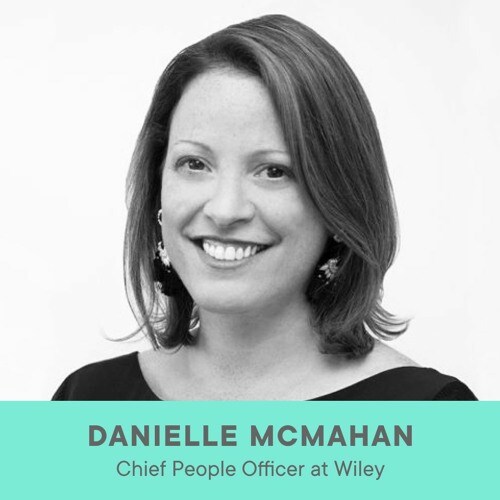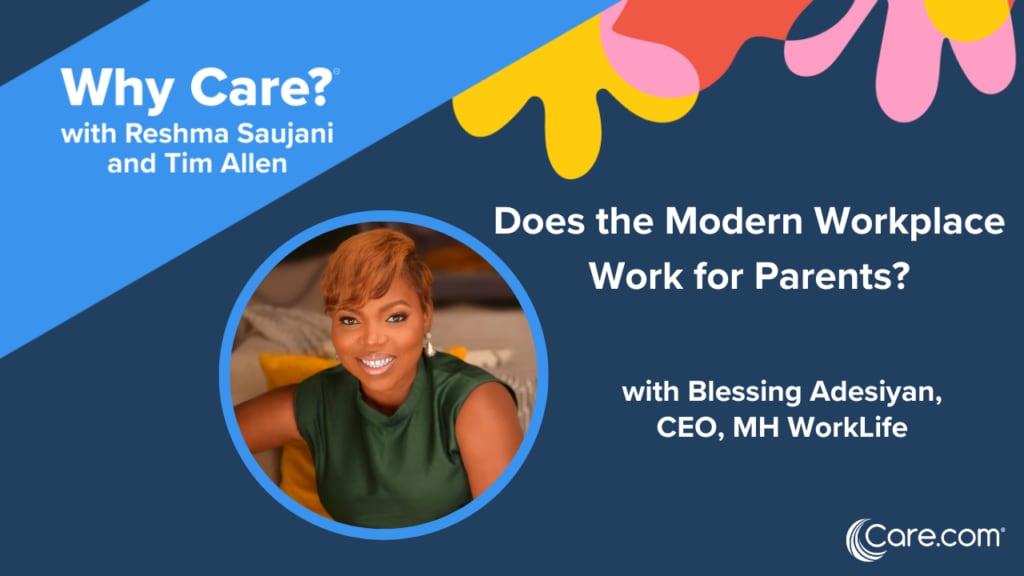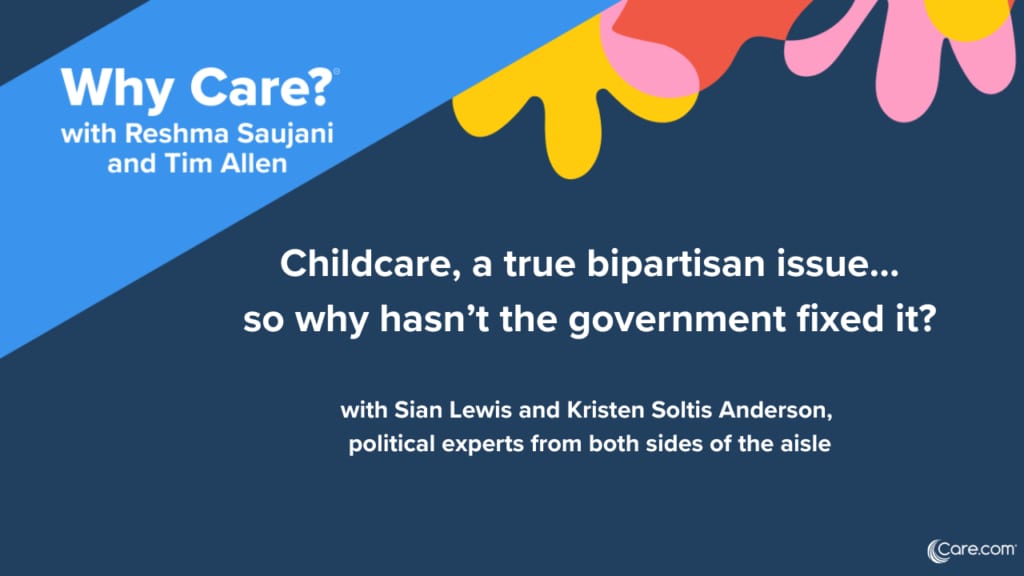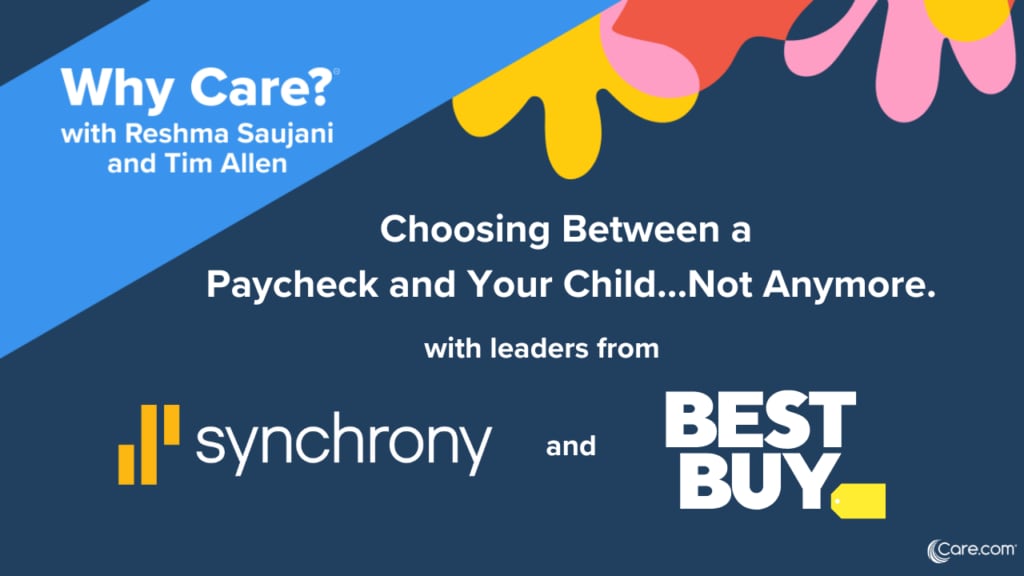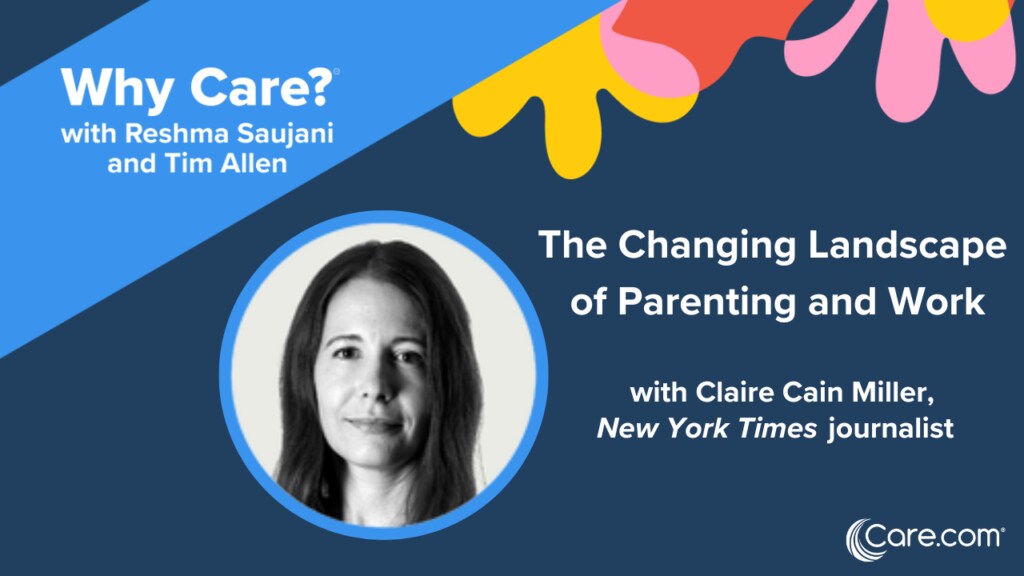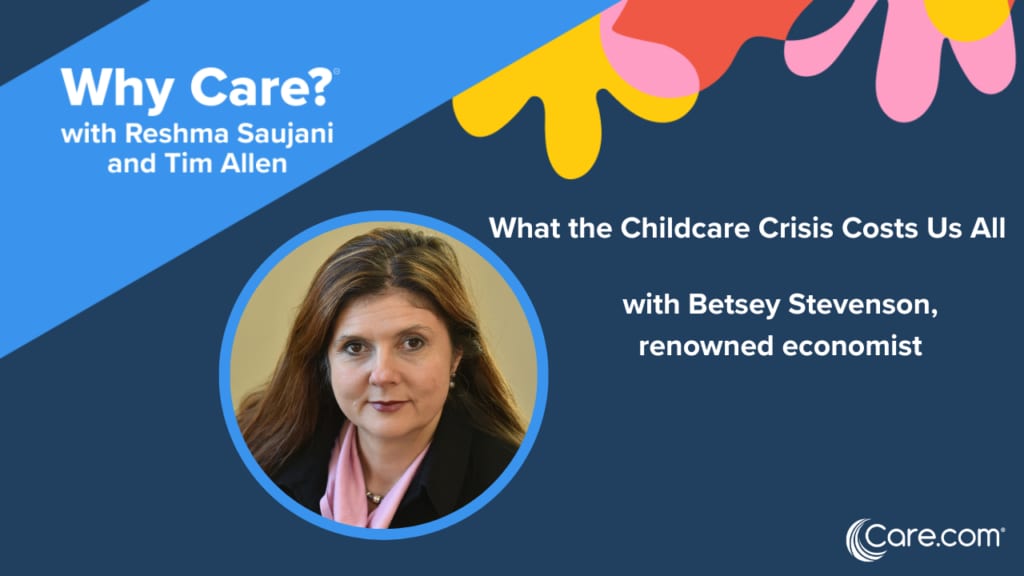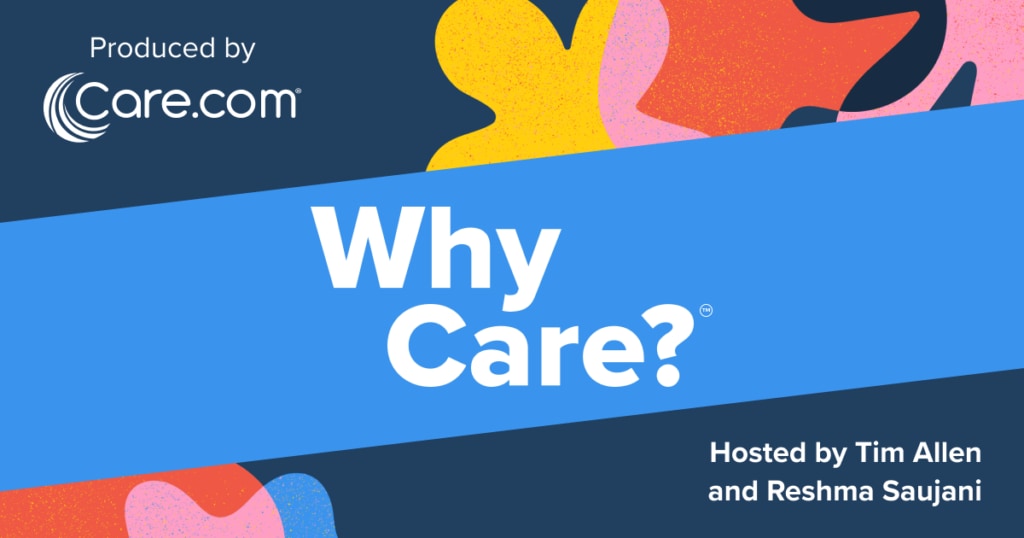The pandemic has exposed what’s most important for us to be happy, productive, and successful – at home and at work. It has also revealed how blurry the lines are between the two, and how important it is for workers to advocate for change. As we start to return to the office, even for just a few days a week, most companies (98% of them according to new Care.com research) plan to introduce new policies and benefits structured around what employees need most to be successful now and in the hybrid workplace soon to come. Danielle McMahan is at the forefront of this transformation. As Chief People Officer at Wiley, a global leader in research and education, she and her team are on a mission to make employee benefits more relevant, accessible, tech-enabled, and family-friendly. Danielle joins us to talk about the future of benefits, how employees can make their voices and ideas heard in the new home/office work environment, and why HR leaders must listen to and learn from them to change the future of work.
Listen to this episode to learn:
- The must-have benefits HR leaders say employees need (including care, expanded mental health and wellness support, and flexibility on when and where work gets done)
- Tools, policies, and processes to help combat workplace burnout and stress
- What employers can do to support women in the workforce and promote them into senior leadership roles
- Why companies that ignore diversity, equality, and inclusion risk attracting and retaining “highly mission driven and values-based” Millennial and Gen Z workers
- Why HR leaders need to build “consumer-centric” workplace experiences for employees that mirror the experiences they have in their personal lives
- Advice for employees and HR leaders alike on how to speak up, listen and learn from one another, and create organizational change
Full Transcript
Wiley’s Chief People Officer: Speaking up for change in the new hybrid workplace
Intro: Welcome to the Equal Parts Podcast brought to you by Care For Business.
Emily Paisner: Being a working parent is hard, but it can be a lot easier when you have the support of your company and that starts with the people who are responsible for shaping the policies and benefits at work. Our guest today is one of those leaders. Danielle McMahan is the Chief People Officer at Wiley, a global leader in research and education. She joins me to talk about the future of employee benefits, adapting to a new hybrid workforce and how HR leaders and employees can create change within their organizations. Have a listen. Danielle, thank you so much for being here. Welcome to Equal Parts.
Danielle McMahan: Well, it’s a pleasure. Thank you so much for having me, Emily.
Emily: We saw over the past year that chief people officers and HR leaders really took a leading role in helping their organizations and their employees get through this pandemic. As you well know, it was a challenging year for all of us. We learned very quickly what works and what needs to change. Can you talk a little bit about how the pandemic and the last year has really forced you to rethink some of your policies and the employee benefits you have in place?
Danielle: At Wiley, we really [unintelligible 00:01:23] that working virtually was not a barrier. That was really due to the social collaborative tools that we had put in place. Specifically, we have been focusing on really reemphasizing wellness to not just be about the physical and financial, which was a lot of our programming pre-COVID to more of mental and social, to really help support our colleagues in the new virtual environment.
Emily: With everyone so physically far apart, how did you stay in close contact with employees so that you could listen to them and learn from them and hear what they felt like they needed?
Danielle: I believe that where good management practices pre-COVID are just as important in a virtual environment. We spend a lot of time listening to our colleagues, through a variety of forums. We do regular employee engagement surveys, read pulse, to understand how people are feeling in the COVID environment in this virtual world that we live in. Are they highly stressed? How productive are they? What are they looking for in terms of future flexibility?
We do a lot of employee round tables, and we try to make those random at all levels. We solicit feedback from our employee resource groups, which is a great place to go and listen in terms of getting across representation of a diverse workforce and in terms of their thoughts and perspectives on the needs. One of the things that we learned that was really, I think eye-opening for many of us, was that two individuals could look like they have the same situation and be having very different experience.
Many of my colleagues were challenged in this virtual environment. As recently as this morning, I had one who reached out to me, someone on my team who posted a picture of her son, who was working remotely today and had curled up in a ball on his desk behind his monitor so that his teacher couldn’t see him.
Emily: So hard, so hard.
Danielle: It’s so hard.
Emily: I’d love to hear from you what new things you’ve put into place this year to try and better support your employees, how that changed from years past. Also, I’d love to hear how your employees reacted to how quickly you acted as an organization to address their needs.
Danielle: We had to quickly pivot and make sure that we had benefits and wellness programs that were also technology-enabled and on-demand, and that we’re there to help support our colleagues with the high levels of burnout and stress that they were experiencing. Some of the new things that we put in place were things like access to telehealth and giving that access globally. Everyone across the globe has free access to headspace, virtual classes particularly focused on mental health.
We were able to do that in partnership with some of our vendors who have created some great content around parent programs, how to have difficult conversations, our most recent partnership that we have with care.com helps support our colleagues with accessing resources that they need for their depending care situations. Ultimately, for us, it was about enabling our workforce through access to on-demand resources that were tech-enabled in the current environment.
Emily: What is your take on how companies can help to fill this gap in terms of providing child care support for their employees and beforehand, a lot of times these are seen as nice to have benefits but can you talk about why you quickly made a decision to put this benefit into place and now it’s a must-have?
Danielle: It’s a must-have because it’s the single biggest source of stress for our working parents managing in this hybrid environment. What’s become really clear to me is that as we start to return to office in whatever form that looks like, even in potentially hybrid environment, is that the dynamic with schools, I believe, have changed. An example would be my daughter goes to the class, she’s on this AV schedule every other week.
About three weeks ago, we had a big snowstorm in the Northeast, and she was supposed to be in school. On a dime, the school flipped to a virtual environment and we hadn’t been expecting it and we as a family had to pivot to make sure that we had the support in place for her to be able to homeschool that week. I think that we’re going to continue to see that happen as we return to work and companies start to think about how to be more hybrid. The other benefit that is a must is really putting in flexible programs. Flexible programs could be whether or not someone comes in a couple of days a week or you start to shift and think about working hours differently, but it’s something that’s been a big focus for us in this virtual COVID world where we are encouraging our colleagues to have direct conversations with their managers about the stresses that they’re having at home, with managing, child care or any kind of depending care and thinking about how they may be able to flex and offset their hours so that they can do both successfully.
Emily: Over the course of the pandemic, nearly three million women have dropped out of the workforce. This number is particularly high for Black and Latino women. One of the major reasons for this is really a lack of child care options. What can companies do to better support women in their workforce right now? What can they do to help advance women into leadership roles like the one that you’re in?
Danielle: We have been very attuned to this dynamic at Wiley. I have recently had circulated to our leadership team a Mercer study on this stuff, the number of women who are dropping out of the workforce, and it caused us to start to look at a variety of data elements around turnover and mobility to make sure that we’re really tracking on “Are there any early indicators that we might fall into the same pattern?” So far, we have been very lucky.
I believe it’s because of the flexible programs that we’re putting in place and how we’re talking about the future of the return to office and because we put in programs where we were supporting women with access to backup child care and the ability to source care for regardless of who the dependent is, whether it’s an aging parent or even a pet. The other thing from a mobility perspective is we have been focused on adding employee resource groups for women in tech. We have added some high potential programs and access to learning for our future women in leadership roles.
I encourage women to make sure that they’re tapping into those resources in their organizations to make sure that they’re proactively facilitating conversations on how they’re going to be mobile in this environment. One of the things that I think will be great in the future of work is that as companies move into these hybrid environments, it’s not just a benefit to the companies to open up access to talent pools but it should be an opportunity for employees as well. What I’m hoping for is that women in particular would have access to roles that maybe they wouldn’t have had before.
Emily: There’s a lot of talk right now about diversity and inclusion. Recently, I read an article in The Washington Post saying that both millennial and gen Z workers are really starting to prioritize working for companies that are seriously committed to D&I initiatives. I’m curious if you’ve seen this to be true with your younger employees and applicants and if you could talk a little bit about some of the diversity diversity and inclusion initiatives that you’ve put in place.
Danielle: This next generation and the one that’s following, they continue to be highly mission-driven, and they’re very values-based and balance-driven in the way they approach work. We’re finding that they are joining Wiley. They articulate because of the flexible programs that we have, the way we talk about our future of work policy, and the diversity programs. Everything from our ERGs and the access to learning that we’ve put in place, as well as recently we have rolled out and have been talking with candidates regarding our new ambassador community, which is a program of 200 voluntary colleagues across the globe who are helping us to create better social and diversity programs.
Emily: How can employees advocate for change within their organizations to make their policies and benefits more family-friendly? I think a lot of times employees don’t know where to start, they’re hesitant, they think they might get looked down upon for trying to create change. We’d love to hear from your perspective how they should go about it.
Danielle: My advice is to speak up, you have to be an advocate, I always tell the colleagues at Wiley in every town hall, “I cannot solve problems I don’t know that I have.” We actively encourage our colleague base to bring forward, what are the problems and challenges they’re facing and share with us your solutions and ideas. We’re only as good as our collective population in terms of problem-solving.
We recently had a parent group in the UK, one of our employee resource groups who raised for the benefits team that we unintentionally had some biased language in one of our benefits programs as it related to fertility that prevented our LGBT community from taking advantage of it. We had no idea. We thought we had these great benefits offering around fertility. We talked about it being a best-in-class practice, but because of the way it was worded and phrased, our LGBT community was unable to take advantage of it. The minute they brought that to our attention, we quickly edited.
I believe that companies are listening, so you have to be an advocate, bring it forward. The second thing that I would say is that we have to lead from the front. I give an example, my kids interrupt all the time, every day. It’s interesting to me that pre-COVID I would work from home, my kids would never dare walk into my office. It just never happened. Now, the lines are completely blurred, not only in our workdays but even just in the formality of it all.
My kids and my husband have no problem walking in interrupting mid-sentence, mid-meeting. A practice that I put in place is that when my kids come in, the rule in my family is they have to present their issue or concern or question to the meeting.
Emily: I love that. That’s great.
Danielle: You can imagine it’s created some really human moments, a lot of levity. Sometimes it works out well. My team once helped debate with my nine-year-old Sasha, whether or not she could go to soccer. A second time, it backfired on me because a colleague who I thought was really aligned with my philosophy around no TV after school gave my daughter permission to watch TV. It’s been a lot of fun that women are– I was a total moment, [unintelligible 00:12:38] grateful for this. I tell them, “You know what, it’s okay. You just have to embrace it and integrate it because that’s where we are today.”
Emily: My daughter has become very close with some of my colleagues over Zoom, and it’s funny, some of my colleagues, she doesn’t even know what they look like, but she knows what they sound like. She will say, “Oh, are you talking to so-and-so?” “Yes, I am.” It’s funny how they’re really becoming integrated into our work lives. It’s nice that our kids get exposure to the people that we’re spending the majority of our days with and vice versa.
Danielle: I agree. I actually think this concept of work-life integration is a powerful one because I don’t believe balance is realistic.
Emily: No. The New York Times recently ran a series called the primal scream, where they had women calling in and actually screaming and getting rid of some of the negative energy that they’ve had over the past year but one of the lines that the Times wrote is that the pandemic has finally exposed work-life balance for the lie that it is. It’s a really powerful line that I can’t get out of my head.
I agree with you, that balance is done. There’s no balance. It is all about integration. Thank you for talking about how employees can be advocates for change. Can you just share on the flip side of that, if there are other HR leaders listening, what your advice would be to them to act quickly and swiftly to respond to the needs of their employees?
Danielle: Another big focus for us is around up-skilling and re-skilling your workforce. Our colleagues are demanding access to learning and digital training so that they can increase their skillset. I don’t know if you saw that Josh Bersin article on HR trends. Did you get a chance to see that?
Emily: I did not.
Danielle: It’s a great read. It’s a quick read. He talks about the trends for 2021. He talks about what you spoke about earlier, which is that HR is in the front burner. It’s at the center of innovation because of the colleague experience that HR is creating per technology. To support this concept that we’ve been talking about around work-life integration, I need to create this consumer-centric experience that mirrors the experience we have in our personal lives.
In my personal life, my 13-year-old came to me and she had a project for social studies and she needed glue and she needed brown paper and some clay that I had no idea where I was going to find it, and I was able to quickly tap on my phone, access Amazon, and everything was here two days later. How do we create that same experience for our colleagues in everything, their whole work experience in terms of the tools that we’re providing them, the processes that we were creating?
Then finally, make sure that you’re always listening and that you’re leveraging data to make sure that you understand what the needs of your colleagues are so that we are giving them the right services and programs to support them with winning at work so they can succeed at life.
Emily: I love that reframing, thinking of your employees as consumers and how do you provide them with the best experience possible. What is one piece of advice that you would give our listeners on how they can be happier and healthier and really more fulfilled in this work-life integration that we’re now living in?
Danielle: I’m going to give them two, one is protect your time. The one thing that COVID has proven to us is that it’s easy in this virtual environment to allow the lines to start to blur. I realized last week, that on average, I have sometimes 15 meetings in a day because I’m so busy trying to connect with people, and so what I have done is I’ve been very vocal with my colleagues and my team to say that from 6:00 to 8:00 every day, that’s my family time. That’s when I’m making dinner, I’m talking about my kid’s day.
I’m starting to do bedtime. I’m not always successful, but I really try hard to protect that time. Second is don’t be afraid to speak up and ask, if you don’t ask, you can’t get. Earlier in my career as a new mom and my boss at the time of a Fortune 100 company called me and said, “Hey, just checking in when are you coming back to work?” I was terrified of this conversation, and I had the nerve to say to him, “Yes, I would love to come back, but I want to come back four days and I want 100% of my salary.”
Emily: Good for you.
Danielle: I took a breath and he said, “Yes.”
Emily: That’s great.
Danielle: That is really my biggest piece of advice, make sure that you’re asking, leaning into the processes and tools that your company is providing you, and that you’re having candid conversations with your leaders about what you need to be successful.
Emily: That’s amazing, thank you so much, Danielle, for being here today, I really appreciated your insight and conversation.
Danielle: Thank you for inviting me, it was a lot of fun, I appreciate the time.
Outro: Thanks for listening to this episode of Equal Parts, see you next time.
Emily: Wait before you go, I just want to tell you a little bit about Care For Business, by care.com. They work with some of the world’s largest companies to offer family care benefits to their employees. If you’re one of the lucky ones who already has care benefits at work, use them. If you don’t ask for them, it’s a real lifesaver. To learn more, visit care.com/Care For Business, again, that’s care.com/Care For Business.
